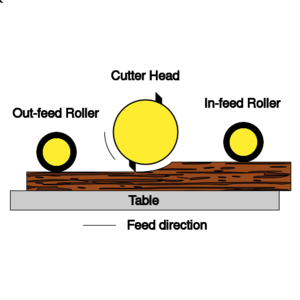Planers: Difference between revisions
From
No edit summary |
No edit summary |
||
| Line 3: | Line 3: | ||
|designer = [[User:Tim|Timothy Schmidt]] | |designer = [[User:Tim|Timothy Schmidt]] | ||
|date = 2021 | |date = 2021 | ||
|vitamins = | |||
|materials = | |||
|transformations = | |||
|lifecycles = | |||
|tools = [[Wrenches]] | |tools = [[Wrenches]] | ||
|parts = [[Frames]], [[Nuts]], [[Bolts]], [[Plates]], [[End caps]] | |parts = [[Frames]], [[Nuts]], [[Bolts]], [[Plates]], [[End caps]] | ||
| Line 12: | Line 16: | ||
[[Category:Projects]] | [[Category:Projects]] | ||
[[Category:Manufacturing]] | [[Category:Manufacturing]] | ||
=Introduction= | |||
=Challenges= | =Challenges= | ||
Revision as of 04:04, 25 May 2021
Project: Planers
| Tools: | Wrenches |
|---|---|
| Parts: | Frames, Nuts, Bolts, Plates, End caps |
| Techniques: | Shelf joints, Tri joints |
Introduction
Challenges
Planers or thicknessers use a spinning blade or series of cutting tools to flatten a board to a desired thickness. Thicknessing wood can require a powerful motor and sharp tools moving quickly. Engineering a safer tool than commercial equivalents is a goal, but great care with respect to safety should be practiced around any such tool.
Approaches
Parts
- Dewalt portable planer
- Shelix helical carbide cutting head - shares tooling with lathe and mill
Interoperability
Development targets
- Replimat planer (frame, pillow block bearings, flat steel blades sharpened on grinder with replimat linear bearing attachment, motor, V wheels, sheet stock, hardware)
References
